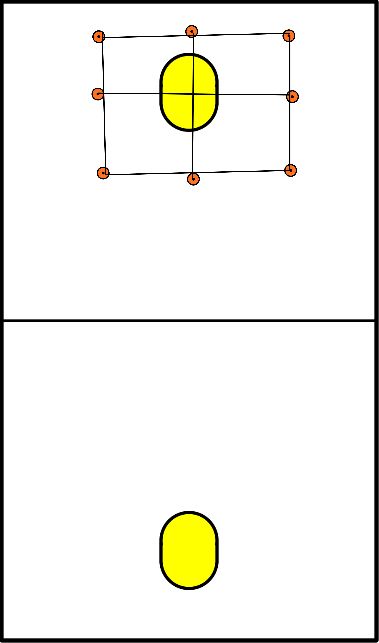Korfball drills for technique attack / score
- Play 4 against 4 in which they must perform the above exercise 5 + 6, the defense may not predefend on the support there must be 1 shot allowed.
- After 1 shot 4-0 and again. Change task after 1,5 min.
- Poles in a square.
- Under each pole stands a lady.
- Two gentlemen are going to defend the other two gentlemen.
- The attackers must try to take a through ball on any pole.
- The defenders' task is to make it as difficult as possible for the attackers.
- Goal: Learning to take a walkthrough ball with a defender.
- In a game we are often hindered by the opponent when taking a walkthrough ball.
- But in training you are usually not hindered, hence these exercises.
- Two pairs (the pairs from the last part of exercise 1) are going to play against each other between two baskets.
- Which pair scores the most in 4 minutes against the other pair?
- After 4 minutes rest for a moment and then again for 4 minutes against another pair.
- A goal may only be scored by means of a deep line (run through from deep) or by what was trained in the previous drill.
- 4 baskets in a square, one pair of the same sex next to a basket.
- The baskets are spaced 16 metres apart.
- The pairs of ladies and gentlemen face each other at a basket.
- There is one runner (shooter) and one server.
- The runner walks towards the opposite basket, the runners circle each other at the height of the centre, to score at their own basket: (changing function after an exercise)
- Reduce the attack space and divide into four squares.
- Players split into the four squares
- They play the ball around and change sides or diagonally
- They switch sides and diagonally. (attacking)
- Place one defender in the van and play on the second chance. (action after the shot)
- Two defenders, no manning under the basket when shot. (running rebound)
- Putting diagonal passing into play. (defenders attacking from the back).
- Change boxes during the game.
- 4/3 same assignments
- 4/4 set up NO REBOUND. Tackle the backfield (the backfield is the space where no attacking takes place).
- Take care of the signal.
- Dare to take the second chance.
- You can vary with time or ball contacts.

- The players walk from under one basket to the next basket, changing their roles (shooter/forward) when they miss a ball or a shot.
- We'll see who scored the following goals first:
* 10 walk-through balls * 6 dodge balls *
8 dodge balls * 4 dodge balls
- Two players per post.
- 1 player in front of the basket at 7 meters.
- there is a change of function when the shooter scores 2 times
- Match shape, 2 quads and 3 baskets.
- Two baskets are in a normal match situation, the third one is in the middle.
- The game is played according to the normal rules with the exception that both teams may score on the middle basket.
- Correcting the positioning of players.
- Variation by
:- after a goal attempt, there must be a goal attempt on the other basket-
after a goal, the attacking side continues.
- Two pairs near a basket.
- There is an attacking pair and a defending pair.
- Rules: in a turn (time between start and interception), it is not allowed to double with the attacker (the trainer) under the basket.
- The pair will change positions after 3 interceptions.
Which pair scores the most in 2 minutes? (trainers keep track of time). - Have all pairs play against each other (so three games if there are eight of you).
- The players walk from under one basket to the next basket, changing their roles (shooter/forward) when they miss a walkthrough or a shot.
- We will see who has scored the following goals first
:* 10 walk-throughs * 6 dodge balls*
8 walk-throughs * 4 dodge balls
- The baskets in a square.
- Pairs at a post.
- Together they score on their pole
:* 4 penalty shots*
4 pull-away balls (from under the basket to the front)
* 4 neighbourhood balls*
4 shots from 5 metres - Repeat this 3 times on the same pole.
- The first time, the trainer keeps track of time.
- The second time, the players must finish faster than the first time, otherwise they will have to sprint around the poles for three rounds.
- The same is true for the third lap with respect to the second lap, unless the first lap was faster than the second.
- In that case, the time of the first lap must be used as a guideline for the third lap.








